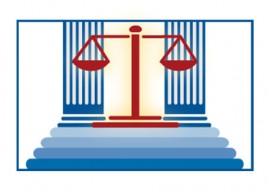Case Digests: “Santalucia v. Sebright Transportation,” “Baker v. Dorfman,” “Britt v. Legal Aid Society”
By Lazar Emanuel [Originally published in NYPRR January 2001]
Santalucia v. Sebright Transportation, Inc.
Contingent-Fee cases are property of dissolving firm. Absent contrary agreement, firm gets value of claim at dissolution, not quantum meruit.
The wrongful death claim of plaintiff Santalucia was settled for $1,000,000. Brian Premo, plaintiff’s counsel at settlement, asked for an ancillary order apportioning the contingent fee between him and his former law firm, now dissolved. The District Court for the Northern District of New York awarded $310,464.47 to Premo and $19,407.50 to the firm. The firm’s portion represented an award in quantum meruit calculated at a reasonable hourly fee multiplied by the number of hours spent on the matter by the firm prior to the dissolution. The lower court reasoned that Premo had done most of the work following the firm’s dissolution. The U. S. Court of Appeals vacated the lower court order and remanded for additional fact finding.
The plaintiff retained Premo’s law firm to pursue the wrongful death action in January 1998. Premo was assigned to be the lead lawyer and proceeded to investigate the facts and research the law. One year later, the firm was dissolved. It ceased to operate in February 1999. The shareholders in the firm (the firm was organized as a professional corporation) agreed that each lawyer would keep the files he was working on and take the steps required to protect the clients’ interests. There was no written agreement. The firm claimed that it was understood that all matters would remain assets of the firm. Premo contended there was an oral agreement that each lawyer ‘s cases, including contingency fee cases, would become his or her sole property.
After notice that the firm had been dissolved, plaintiff entered into a new contingency retainer agreement with Premo. The case was settled one month later. The lower court based its quantum meruit award on the theory that the dissolution had operated to terminate the firm’s representation of the plaintiff under the original retainer agreement.
The Court of Appeals considered all the legal issues de novo. It found first that the lower court was wrong to rely on the language of original retainer agreement between plaintiff and the firm. The agreement defined the relationship between client and lawyer, not among the lawyers in the firm or between any one lawyer and the other lawyers. Thus, the retainer agreement was irrelevant on the issue of fee distribution.
The Court then considered the settled New York law imposing a duty of loyalty by one member of a firm to the others. It concluded that the New York Court of Appeals had never decided the specific issue of “when and to what extent a lawyer has a fiduciary duty to account to a dissolved firm for the contingent fee cases that he took with him.” It noted, however, that the Appellate Division has consistently held that “absent an agreement to the contrary, pending contingent fee cases of a dissolved partnership are assets subject to distribution” [citing Shandell v. Katz, 629 N.YS.2d 437, 439 (1st Dept. 1995)].
This does not mean that the full amount of the settlement necessarily goes to the firm. It does mean that the firm is entitled to the value of the claim at the date of dissolution.
In the absence of a controlling agreement, the court will fix the value as of the date of dissolution. The portion allocated to the firm will then be distributed to the members in accordance with their pro rata interest in the firm.
Premo argued that the lower court had determined that the settlement was due almost entirely to his efforts and that quantum meruit was a proper basis for determining the value of the firm’s interests. The Court of Appeals disagreed, pointing out that the lower court had not truly allocated the value of plaintiff’s case both before and after the dissolution.
Premo also argued that the Shandell case had involved a law partnership under the General Partnership Law, not a law firm operating under the N.Y. Business Corporations Law, and that the same standards of loyalty which applied to a general partner did not apply to a corporate shareholder. The Court rejected this argument, relying on the Appellate Division decision in DelCasino v. Koeppel [615 N.Y.S.2d, 454 (1994)], as well as cases in other jurisdictions and its belief that the New York Court of Appeals would follow the reasoning in DelCasino.
The Court concluded: “We hold, therefore, that under New York law, when a professional corporation of lawyers dissolves and a lawyer leaves with a contingent fee case, absent an agreement to the contrary, that case remains a firm asset. When the case is concluded and the contingent fee is collected, the lawyer is obligated to remit to his former firm the value of the contingent fee case measured at the time the firm dissolved.” [Santalucia v. Sebright Transportation, Inc., 2d Cir., NYLJ, 11/27/2000, QDS:10763208.]
Baker v. Dorfman
Assets of lawyer’s professional liability company can be reached by judgment creditor of lawyer liable personally for malpractice and fraud.
Plaintiff Baker sued attorney Dorfman as a sole practitioner for malpractice and fraud in inducing the representation. The case was tried before a jury. The district court entered partial summary judgment for Baker on the issue of malpractice. Dorfman had failed to bring a timely motion for leave to file a late notice of claim against New York City and had filed Baker’s complaint after the statute of limitations ran.
The jury was asked to determine malpractice damages and the issues of fraud and punitive damages. The jury found that Dorfman had committed fraud in the written resume of qualifications he gave to Baker and awarded compensatory damages, punitive damages and expenses totaling $380,000. The court added interest and attorney’s fees.
Dorfman brought two appeals. In the first, he argued that the New York courts did not recognize the basis for Baker’s claim; that the damages awarded by the jury were against the weight of the evidence; and that the statements in his resume were mere puffery. The Court of Appeals rejected all his arguments and affirmed the judgment. [Baker v. Dorfman, 2d Cir., Docket No. 99-7528 (9/1/2000).]
Dorfman’s second appeal dealt with the successor liability of the professional liability company (PLLC) formed by him to conduct his practice following the judgment. The lower court held the PLLC liable and assigned plaintiff Baker a 70% interest in the profits of the PLLC, ordered Dorfman individually to make certain payments to Baker, turned Dorfman’s IRA over to Baker, and appointed Baker’s counsel as a receiver over the PLLC. The receiver was given broad authority over the PLLC’s law practice.
The Court of Appeals affirmed, but it sent the case back to the lower court to review its order defining the scope of the receiver’s authority. The lower court must decide whether the referee’s intervention in the PLLC’s law practice would violate the rules controlling client confidences; unduly interfere with the conduct of the law practice (e.g., control fees and billing; determine lawyer compensation; interfere in legal decisions); and breach the rules governing fee collection by lawyers. [Baker v. Dorfman, 2d Cir., Docket No. 00-7954.]
Britt v. The Legal Aid Society, Inc.
Court of Appeals extends statute of limitations for malpractice in criminal cases.
In malpractice cases against lawyers, the general rule is that the statute of limitations begins to run when the representation ends. In Britt, the Court of Appeals was asked to decide whether the rule applied to malpractice claims in criminal actions. In a unanimous decision, the Court held that it did not. Instead, the statute begins to run when the proceeding terminates. The Legal Aid Society argued that the cause of action had accrued against it in 1991, when one of its lawyers was removed from the case. Plaintiff Britt argued that the statute of limitations did not begin to run until his guilty plea was vacated (1994) or when his indictment was dismissed (1996). The Court emphasized that a plaintiff in a criminal malpractice claim … “bear[s] the unique burden to plead and prove that the… conviction was due to the attorney’s actions alone and not due to some consequence of his guilt.”
Lazar Emanuel is the Publisher of NYPRR.
DISCLAIMER: This article provides general coverage of its subject area and is presented to the reader for informational purposes only with the understanding that the laws governing legal ethics and professional responsibility are always changing. The information in this article is not a substitute for legal advice and may not be suitable in a particular situation. Consult your attorney for legal advice. New York Legal Ethics Reporter provides this article with the understanding that neither New York Legal Ethics Reporter LLC, nor Frankfurt Kurnit Klein & Selz, nor Hofstra University, nor their representatives, nor any of the authors are engaged herein in rendering legal advice. New York Legal Ethics Reporter LLC, Frankfurt Kurnit Klein & Selz, Hofstra University, their representatives, and the authors shall not be liable for any damages resulting from any error, inaccuracy, or omission.
Related Posts
« Working Without Fees: Failure to Heed Rules in Domestic Relations Matters Ethics 2000 Commission Issues Timely Report »








